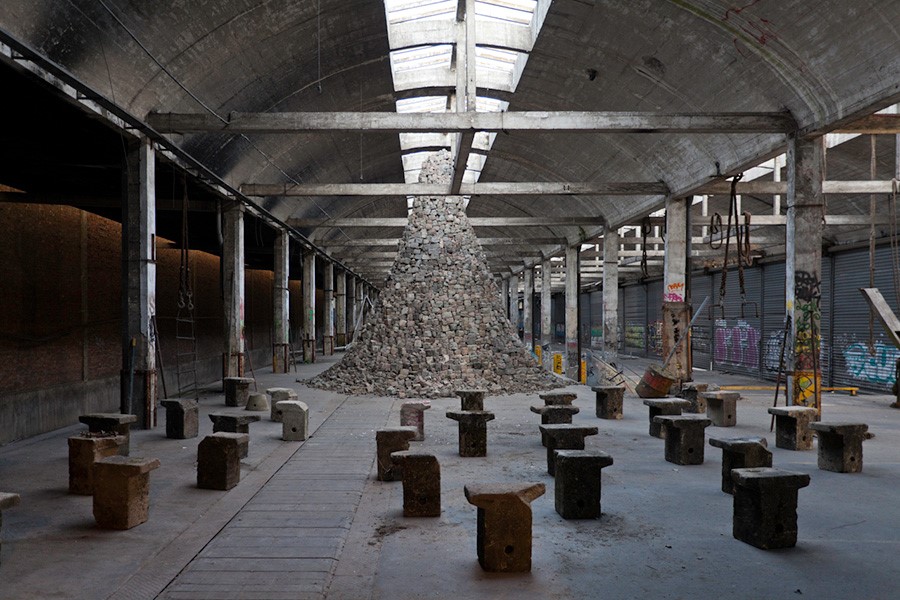
By The Reverend Canon Dr. William J. Danaher, Jr
Scott Hocking creates massive, moving structures in unexpected places that invite meditation. Among his recent work, one of my favorites, is called Babel, which was displayed in Lille, France, from 2015-2017.
Set in a former railway station near one of the busiest markets in Europe, Babel is based on the story of Babel in the Bible. In Genesis, we read that the “whole earth had one language” and that the people decided to build a tower “with its top in the heavens” in order “to make a name for ourselves” (11:4). The Lord visited the tower and feared the power that such people might have. Therefore, God decided to “confuse their language, so that they will not understand one another’s speech”(11:7). The city was called Babel, (in Hebrew, b?bel), which is a play on the verb, “to confuse” (b?lal).
The story of Babel is iconic. Commentators and artistic interpretations have often treated it as an example of human pride and vainglory. During his lifetime, Pieter Bruegel the Elder (1525-1569) painted three paintings of this passage — two in 1563, entitled “The Great Tower of Babel” and “The Little Tower of Babel,” respectively. In each, Bruegel’s tower follows the lines of the Colosseum in Rome, which was the site of violent games and crude entertainment. He also shows the tower just before it is destroyed; in other words, he shows it — and by implications, the humans that built it — at the height of power. By painting the tower in this way, Bruegel was making a point about the violence that lies behind our all-too-human motivation to build such towers in our own context and lives.
Scott Hocking’s Babel makes a different point. Instead of showing the tower as complete, his Babel is a pile of stones, a literal ruin he has carefully constructed from discarded material he has gathered in Lille and Detroit. His Babel, then, is not so much about human pride, but about human loss. The loss of a common language, Hocking’s work seems to say, is a kind of devastation, and the isolation and collapse of this means of communication is set in the real-time place of an uninhabited train station. The seats around the ruin are an invitation to passersby to stop and contemplate the different communicative breakdowns we have suffered and perpetuated. In time of deep divisions and polarization, Hocking’s work is poignant and plaintive, a kind of prayer to a merciful God to speak a language large enough to gather us again and powerful enough to heal our wounds.
The story of Babel — as told in either the Bible or in artwork — operates in the background of the story of Pentecost in Acts. The disciples are given the gift of the Spirit, and this is revealed in the power to speak the “native language” of another (Acts 2:6). In this way, the coming of the Holy Spirit makes possible the healing of Babel’s curse. Instead of a relationship of challenge and animosity with God, the Spirit of God rests on the heads of the disciples. Instead of confusion, there is union, and even astonishment. This healing does not come with the advent of one language, but in the miraculous ability to speak many languages. In this we find a new way of being together — neither uniformity or distance, but a unity-in-difference.
Pentecost, then, is a time to celebrate the way God the Holy Spirit brings together people from every nation, every race, every ethnicity, every language. At services this Sunday, the story of Pentecost will be read together in ten languages as a reminder of the healing God is bringing into being through Jesus Christ and the Holy Spirit. In a time of polarization, Pentecost invites reflection, not only on the communicative ruins around us, the polarization that divide us, the conflicts that consume us; rather, Pentecost is a reminder that we are being called into a wholeness, healing and peace that passes all understanding, which the world sees as our witness to the love the binds us together with ties that are stronger than death.
Cover photo: Babel–Scott Hocking, arr. 2015-2017